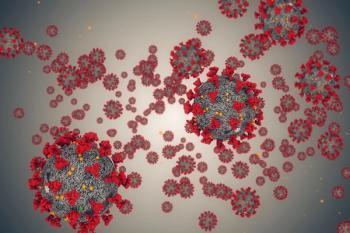
Increasing Vaccination Divide Between Rural, Urban Communities
Rural areas lag well behind their urban counterparts when it comes to COVID-19 vaccinations
A report from the CDC found that 59% of residents in rural counties had received at least one dose of a COVID-19 vaccine between Dec. 14, 2020, and Jan. 31, 2022, compared with more than 75% of individuals living in urban counties.
This urban-rural gap has widened more than twofold, as a previous study from Dec. 14, 2020, to April 10, 2021, showed a gap of 6.8%, compared to 16.9% in the most recent study.
“Addressing barriers to vaccination in rural areas is critical to achieving vaccine equity, reducing disparities, and decreasing COVID-19–related illness and death in the United States,” researchers said in the report. “Public health practitioners could focus on collaborating with health care providers, pharmacies, schools, community-based organizations, faith leaders, and local employers to improve vaccine confidence, ensure equitable vaccine access, and encourage staying up to date with recommended COVID-19 vaccinations in rural communities.”
The study showed that 46 states had higher vaccination rates in urban areas than rural. One state, Arizona, had higher vaccination rates in its rural counties compared to urban ones. The other three states do not have rural counties.
Nebraska had the widest disparity in vaccination rates, with 71.3% of residents in urban counties having at least one dose of a COVID-19 vaccine, compared to 43.2% of rural resident.
Children between the ages of 12 and 17 had the largest urban-rural disparity in vaccine coverage, with only 39% of rural county residents having received at least one dose compared with 65% of those living in urban counties. The share of children 5 to 11 who’d received at least one dose of a vaccine was more than double in urban counties than in rural areas, at 30.5% to 14.7%.
When measuring full vaccination and booster or additional shots, the disparity between urban and rural areas narrowed. Only 66% of residents in urban counties had completed either a single or two-dose regimen compared with 49.7% of rural county resident.
“The low booster dose coverage in urban and rural counties highlights the importance of developing and implementing innovative strategies to promote COVID-19 vaccines among all persons who are eligible for booster or additional doses and to receive these doses at the recommended intervals,” the study authors said.
Political beliefs and vaccine hesitancy play a role in vaccine disparity between urban and rural areas. One additional factor that may be contributing to the disparity in vaccine coverage may be rural residents having less access to health care services. Almost 140 rural hospitals have closed since 2010, with 19 in 2020, the highest in one year since 2005.
Newsletter
Pharmacy practice is always changing. Stay ahead of the curve with the Drug Topics newsletter and get the latest drug information, industry trends, and patient care tips.

























































































































































